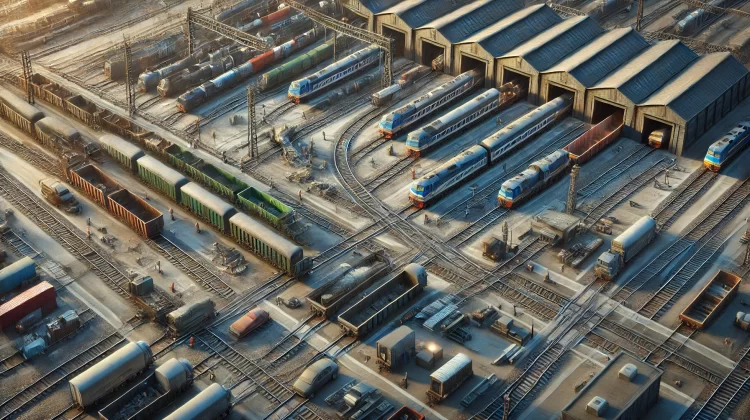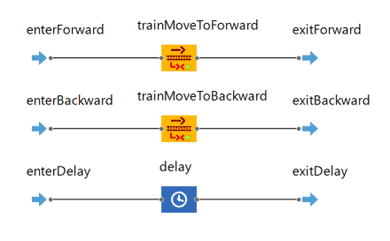
- Client :
- Category :Railyard Library
- Project Url :
- Date :February 9, 2025
The Challenge
A railyard plays a critical role in the transportation network, acting as a central hub where trains are assembled, maintained, and routed to various destinations. The efficient operation of a railyard is essential for maintaining the overall flow of goods and passengers, ensuring on-time deliveries, and avoiding bottlenecks that can disrupt the entire rail system. As the demand for rail transport grows, optimizing railyard operations becomes increasingly important to ensure scalability and efficiency.
In a typical railyard, there can be numerous parallel tracks (up to 20 e.g.) that interconnect at various points. Each train may follow a different sequence of tracks, creating complex routing challenges. This level of complexity makes it impractical to model each individual track or route separately. Instead, the simulation must be as flexible and standardized as possible, allowing any route to be defined dynamically without altering the underlying model. Key performance metrics to track include total route time for each train, the time a train spends blocked by another, delays caused by shift changes, and the time spent on maintenance processes such as locomotive washing and upkeep.
The Solution
The primary objective of the simulation is to model the current performance of trains in the railyard based on their existing routes. The simulation is designed to evaluate the potential benefits of adding parallel tracks to alleviate congestion, minimize the risk of deadlocks, and enhance the overall flow of operations. By testing different configurations and modifications, the simulation aims to provide insights into how best to optimize railyard operations to handle increasing traffic without sacrificing efficiency.
Although the simulation offers valuable insights, there are limitations in terms of accuracy and granularity. In the absence of precise data, the simulation leverages probability distributions to approximate key factors, such as train arrival times, locomotive types, route choices, and process durations. This approach helps overcome data gaps while still providing a realistic representation of railyard operations, nevertheless, this may slightly affect the precision of the results. However, the model remains useful for evaluating the overall impact of proposed changes to the railyard layout.
The simulation is built using AnyLogic’s discrete event simulation capabilities, specifically utilizing the Process Modeling and Rail Libraries. The model is designed to be simple yet flexible. Rather than modeling each individual track, the train routes are defined in an Excel-like format, using a “recipe” style that allows for easy modifications. In AnyLogic, the process is programmed to guide the trains along their designated routes using blocks such as Enter-TrainMoveTo-Exit, which allows each train to follow its specific path without manual adjustments.
The model features four key agents:
- Layout: Represents the logical blocks of the railyard and handles the 2D animation of train movements.
- Locomotive: Represents individual locomotives.
- RailCar: The cars that each locomotive can transport.
- Train: A composite of a locomotive and its attached railcars.
This structure ensures that the model is both scalable and adaptable, capable of simulating various train configurations and operational scenarios.
Results
Since it is not possible to show the exact results of this project, we can mention that bottlenecks and train blockages were identified in specific segments of the rail lines, providing valuable insights into the current operational constraints of the railyard. However, a detailed analysis of these findings revealed that, while critical situations did occur, they were isolated incidents rather than systemic inefficiencies. As a result, the cost-benefit assessment indicated that the operational impact of these disruptions was not significant enough to justify the investment in additional parallel tracks.
The results were deployed in a spreadsheet showing the train id, origin and destination track, including the start and end time and if the train was interrupted or blocked during that route.



